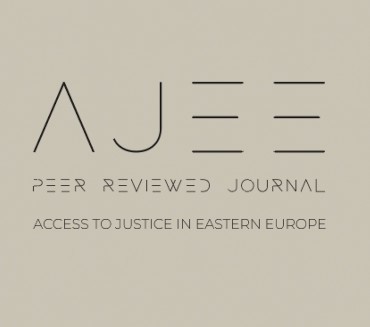1. Introduction. – 1.1. Research Subject. – 1.2. Research Problem. – 1.3. Research Methodology. – 1.4. Research Scope. – 1.5. Research Plan. – 2. Innovations of Artificial Intelligence in Light of the Applicable Legal Rules. – 2.1. The Author as an Innovative Person. – 2.2. The Author as a Natural Person. – 2.3. Legal Entity and Copyrights. – 3. Innovations of Artificial Intelligence Applications and Legal Solutions. – 3.1. Artificial Intelligence Innovations as Public Property. – 3.2. Artificial Intelligence Innovations as Creative Commons or Open-Source Works. – 3.3. Comparing Innovations of Artificial Intelligence to Prior Innovations of Workers. –4. Conceivable Legal Solutions. – 4.1. Artificial Intelligence Innovations as Joint Works. – 4.2. Applying the Rules of Accession of Movables to Artificial Intelligence Works. – 5. The Future of Legal Protection for Pure Artificial Intelligence Innovations. – 5.1. Pure Artificial Intelligence Innovations and Human Intervention. – 5.2. The Legal Personality of Artificial Intelligence and Copyrights. – 5.3. Difficulties of Acknowledging the Legal Personality of Artificial Intelligence. – 5.4. Feasibility of Acknowledging the Legal Personality of Artificial Intelligence Systems. – 6. Conclusions. – 6.1. Research Results. – 6.2. Recommendations.
Background: This paper focuses on the works and innovations accomplished by artificial intelligence (AI) and how current laws and regulations address these innovations within the framework of copyright law. It examines the challenges faced by legal systems in the UAE, Egypt, and France concerning the copyrights of intellectual works produced through AI systems, such as ChatGPT. The study highlights the issue of defining "author" in copyright law, particularly given that AI lacks the personal characteristics associated with human creators.
Methods:
The paper employs a comparative legal analysis, focusing on the legal frameworks of the UAE, Egypt, and France. It examines how each jurisdiction currently addresses AI-generated intellectual property and whether existing laws adequately account for AI's role in creative processes. The study also explores the possibility of granting AI systems "legal capacity" and the need for a specific Code of Ethics to regulate AI use in a manner consistent with human and ethical values.
Results and Conclusions:
The study concludes an urgent need to review and amend existing laws to create a legal framework that effectively addresses copyrights related to AI-generated innovations. This framework should balance the promotion of innovation with the protection of legal rights, ensuring that AI developments are ethically regulated and legally recognised.

